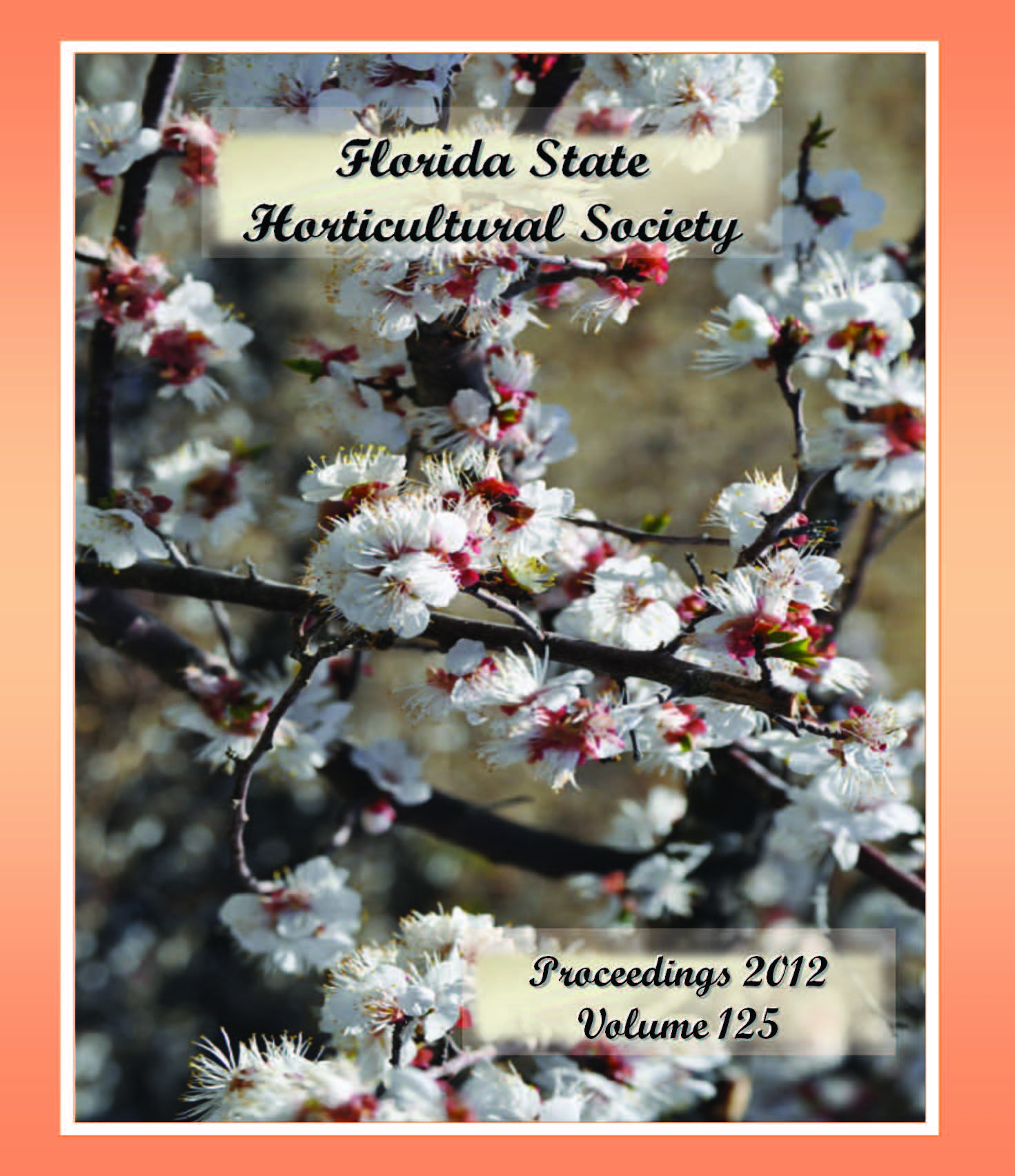Scheduling of Flowering and Fruiting of Southern Highbush Blueberry as a Container Ornamental Plant
Published 2012-12-01
Keywords
- Emerald,
- Gulf Coast,
- Southern Belle,
- Springhigh,
- Sunshine Blue
- Windsor ...More
Abstract
There is increasing market interest in blueberry as a container ornamental plant with intact flowers or fruit for retail sales to home owners. The objective was to manipulate cultural conditions with southern highbush blueberry cultivars in order to control flower and fruit development and extend the marketing season. A multi-site performance trial in five Florida locations found that containerized ‘Emerald’ and ‘Sunshine Blue’ had a high flower plus fruit number (bud count) and other positive aesthetic attributes, although none of the six cultivars tested performed well in the southernmost location, Homestead. In a second experiment, ‘Emerald’, ‘Gulf Coast’, and ‘Sunshine Blue’ were planted from 72-count tissue-culture liners into 15-cm-diameter pots with peat-perlite substrate at UF Gainesville on 15 July 2011, or 16 June 2010 for ‘Emerald’. Plants grown in an unheated plastic-covered hoop house under natural photoperiod flowered on 18 Jan. 2012, 27 Jan. 2012, and 9 Dec. 2011 for ‘Emerald’, ‘Gulf Coast’, and ‘Sunshine Blue’, respectively, with maximum bud count on any measurement date of 84, 65, or 180 buds per plant for the three cultivars. These results were consistent with the first trial whereby ‘Sunshine Blue’ was an early flowering and very floriferous cultivar. A late pinch on 15 Nov. 2011 delayed flowering, but also resulted in a low bud count in ‘Emerald’ and ‘Gulf Coast’, because buds were removed by the pinch. Night interruption lighting from 25 Sept. to 15 Nov. 2011 delayed flowering by 4 to 5 weeks without reducing bud count. Night interruption lighting combined with 26 °C day/15 °C night air temperature from 10 Jan. onwards accelerated flowering and fruit set. Moving plants from the natural environment to a cooler at 2 °C with a 9-hour photoperiod from 10 Jan. to 6 Mar. 2012 delayed flowering, indicating potential to hold flowering plants for late sales. Date of fruit set differed less between cultivars than date of first flower, but was significantly affected by culture treatment. Market season extension could be achieved by growing different cultivars and/or manipulating reproductive growth with light and temperature.

